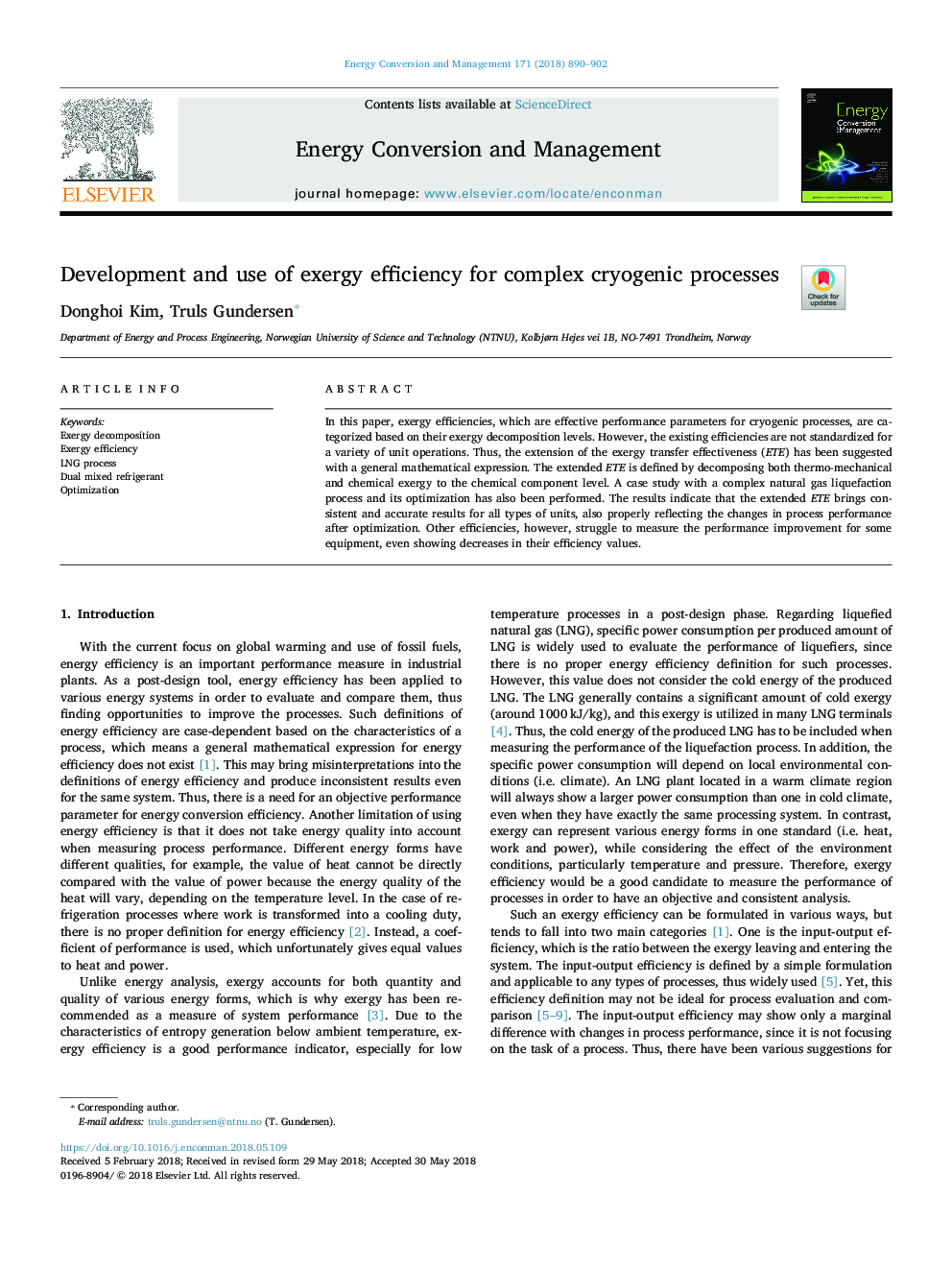| Article ID | Journal | Published Year | Pages | File Type |
|---|---|---|---|---|
| 7158077 | Energy Conversion and Management | 2018 | 13 Pages |
Abstract
In this paper, exergy efficiencies, which are effective performance parameters for cryogenic processes, are categorized based on their exergy decomposition levels. However, the existing efficiencies are not standardized for a variety of unit operations. Thus, the extension of the exergy transfer effectiveness (ETE) has been suggested with a general mathematical expression. The extended ETE is defined by decomposing both thermo-mechanical and chemical exergy to the chemical component level. A case study with a complex natural gas liquefaction process and its optimization has also been performed. The results indicate that the extended ETE brings consistent and accurate results for all types of units, also properly reflecting the changes in process performance after optimization. Other efficiencies, however, struggle to measure the performance improvement for some equipment, even showing decreases in their efficiency values.
Keywords
Related Topics
Physical Sciences and Engineering
Energy
Energy (General)
Authors
Donghoi Kim, Truls Gundersen,
